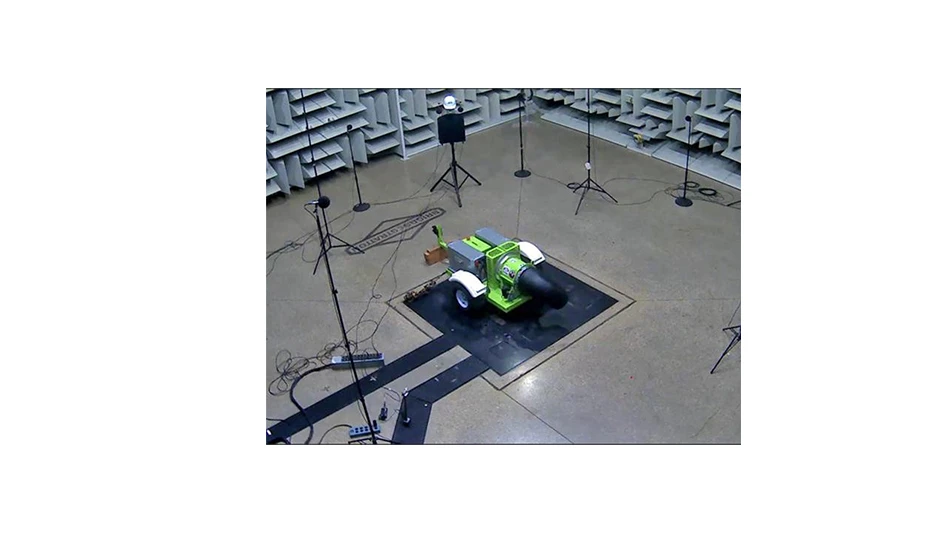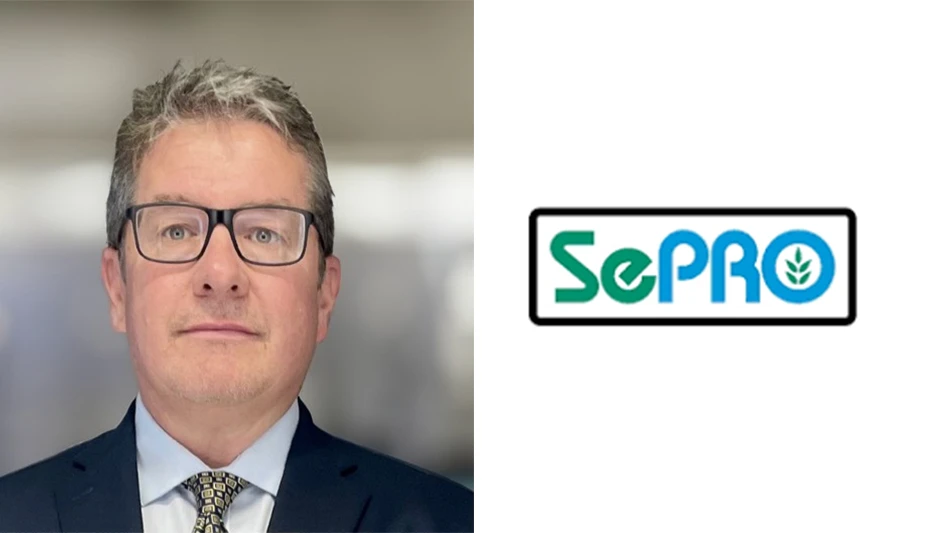
The last few months, I’ve heard from many superintendents — and seen for myself — some unusual situations while in the field. Whenever I encounter something odd on the course, I call the preeminent weed and turf scientist (and my good friend) Dr. Fred Yelverton of NC State University for the facts. I wanted to understand why we’re seeing greater occurrences of certain weeds — goosegrass, kyllinga and dove weed, among them – in northern climates where we haven’t seen these species in the past.
What he said comes down to this: Whether or not you believe in global warming, what’s happening is due to climate trends. And like it or not they are part of the new reality we must face as superintendents.
I’ll let Dr. Yelverton explain.
Explain the difference between climate and weather.
Climate is long-term trends: Climate or climate change is a long-range review of what is happening — a development over many years. Many climate scientists talk about 30-year or greater trends. Weather is day to day.
Another way to say it, climate is a long-term trend and weather is short-term. Weather is what we face today or in the next 10 days. Unfortunately, weather is what the golfer sees and criticizes us for. Superintendents need to have a good source of both current and historical weather data to plan for and make good agronomic decisions. Look at average temperatures in your region over a 30-year period. It will show you the climate trend we are facing. And it is warming. In North Carolina, in the past 30 years, we have had five years as the hottest on record (since 1900). During that same period, no years have been the coldest. This is climate.
It’s easy to access historical data accurate for your specific area. NOAA (National Oceanic and Atmospheric Administration) has millions of data points to reference and review.
Research shows there is a definite warming of this planet. Not to sound dismissive, but one’s feeling on this topic is irrelevant. It is happening. And we are seeing other evidence in the natural world and on the golf course.
Does that explain why northern areas are seeing more weeds?
I work closely with the climate scientists at NC State, who have scientifically documented long-term warming trends. That means warmer weather in cooler regions, which reflects a general warming trend of our planet’s climate. Many weeds once confined to Florida are now in North Carolina, Virginia and even as far north as New England. The march north continues.
What are some examples?
In North Carolina, we’re seeing nighttime temperatures increasing and remaining warmer longer, allowing weed seeds to adapt. Cooler nighttime temperatures would have promoted cool-season turf recovery and limited weed growth; this is no longer the case.
After years of review, NC State’s climatologists have found that minimal nighttime temperatures have increased in the past five years from 71 to 73 degrees. In turf management, higher nighttime temperatures do not allow cool-season turf time to recover and grow. Voids left in the turf allow weed seed to germinate as bentgrass declines.
This is the reason more southern clubs have switched from creeping bentgrass to ultradwarf Bermudagrasses. It has nothing to do with easier maintenance practices! With the air temps so warm at night, the mandatory recovery period required for bentgrass is not happening.
Back in the mid-’90s, North Carolina was an 80 percent creeping bentgrass state on greens. Now we are about 40 percent. Some of the change can be attributed to improved Bermduagrass cultivars. But all our superintendents will tell you it’s harder to grow bentgrass now than it used to be — due, I think, to the gradual increase in nighttime temperatures.
What can we do about this?
Because superintendents are noticing these weeds after they germinate, the usual treatment plans are not effective and need to be amended:
- Pay attention to soil temperatures at 2-inch depth. (A 24-hour mean soil temperature of 55 degrees for several days is the critical soil temperature for crabgrass germination. 60 degrees is needed for goosegrass.)
- Know what types of weeds you have so proper treatments are prescribed.
- The pre-emergent philosophy may have to change and, along with it, no more one-and-done scenarios. You likely will have to split the rates of the chemicals and make multiple applications to have an impact.
Anything else?
I can’t stress enough the importance of making sure you know exactly what weed you are treating. Take a picture of the invasive weed and send it to your weed scientist for verification of the species. In New Jersey, for example, Dr. Matt Elmore at Rutgers University will identify the weed and assist the superintendent in creating the most effective treatment plan for the specific species.
Wrong treatments or over-treating runs the risk of damaging your primary turf species. For example, the treatment for eradicating goosegrass is similar to methods for treating annual bluegrass — degree days, soil temperatures, plant color and proper pre- and post-herbicide applications. Extra caution is required as you head down these new paths. Use your trouble spots for growth or Poa invasion (shade, wet, compact and trafficked) as a test for the course.
What hurts my pre-emergent regime?
Timing of applications, incorrect soil temperatures and avoiding split applications. As climate warms and more rain is experienced, pre-emergents dissipate more quickly and more weeds will emerge. Then this turns into a post-emergent issue, as well.
Are there other areas on the course I should play attention to?
Native areas. These are often called low-maintenance areas (I don’t think they’re low-maintenance), but due to turf density, the weeds sneak in. Goosegrass — like annual bluegrass — is a prolific seed producer and, if left untouched, will produce seeds and make the problem worse. Application timing is essential for success.
What are your thoughts about PoaCure, now that it’s labeled for use in the United States?
As much as everyone wants it to be, it is NOT the silver bullet for annual bluegrass control. If you are using PoaCure, be accurate on your Poa percentage estimates. If you have more Poa than you think you do, you will lose more grass (Poa). Accurate Poa percentages are key to know prior to applications.
Our job depends on knowledge and science. With so much information literally at our fingertips, how can we know what is correct?
Science is based on facts, and facts come from sound data and careful research. How we explain what happens in the natural world is based on science. It’s a scientific process to explain what goes on in the natural world and answers are based on facts, not beliefs. It seems these days people treat science as some kind of belief system. It is not. Facts are facts, whether you choose to believe them or not.
So all the chatter, information and “beliefs” found on social media don’t necessarily mean it’s the truth or fact. Be very careful. Confirmation bias is a term used in statistics and it is poison to understanding facts. Confirmation bias means you have a set of beliefs and you seek facts to confirm your bias. That is not the way the scientific process works. In science, you approach a topic with no preconceived ideas and you see where the data lead you.
You have to look at data that is accurate and from a reputable source. Interpret the data and draw a conclusion based on scientific fact. Do not follow opinion and innuendo. Trust your judgment, find the best possible sources and resources, and rely on data and research — not instinct, and be very careful on social media.
When relaying information to members and golfers, you can’t have an opinion. Your opinion on the matter is irrelevant. Facts are facts.
What about the RoundUp controversy?
It goes back to science. The science says it is not a problem. I am neither a toxicologist nor an epidemiologist, but I do respect what these scientists say. There will always be some disagreement in the scientific community but we look very closely at “scientific consensus.” What do most scientists who specialize in that area have to say about a topic?
Every major regulatory agency in the world has said that RoundUp is a low-risk product. The group that declared glyphosate a “probable carcinogen” (the International Agency for Research on Cancer) is not a regulatory agency. They didn’t even do a complete risk assessment. Worldwide official regulatory agencies have supported RoundUp. The EPA registration for glyphosate is guided by federal law and it’s reviewed regularly. And there is no evidence linking the product to non-Hodgkin lymphoma.
In these types of discussions that get emotional or humanized, don’t get involved and hurt your credibility. Stick with the science, the facts and stay out of the political realm. Science is not a belief system.
How is this going to benefit the superintendent?
Your members and customers think you are objective and understand science. For example, when asked current industry-related questions, have the FACTS lined up to reinforce your scientific viewpoint and avoid hyperbole. That is being a supporter of science and is being professional.
Conclusion
You will be best served to follow the science, as Dr. Yelverton said. You need to get the science right in order to give the green committee an intelligent response and lay out the program. Talk about scientific consensus. Professional people will respect you even if they disagree (generally).
- Avoid confirmation bias — things that support YOUR opinion.
- Fake news travels faster than the truth.
- Give science to skeptical audiences
As Mr. Spock said on Star Trek, “Emotion has nothing to do with it. If you don’t have feelings, you stick with the facts.”

Explore the March 2020 Issue
Check out more from this issue and find your next story to read.
Latest from Golf Course Industry
- Bloom Golf Partners adds HR expert
- Seeking sustainability in Vietnam
- Kerns featured in Envu root diseases webinar
- Toro continues support of National Mayor’s Challenge for Water Conservation
- A different kind of long distance
- Golf Construction Conversations: Stephen Hope
- EnP welcomes new sales manager
- DLF opening centers in Oregon, Ontario





